
New Social Media Campaign
The Sun-to-X project partners have recently launched a new communication campaign aimed at raising awareness of their groundbreaking research and development work in the field of renewable energy. The campaign seeks to inform the public, policymakers, and industry stakeholders about the potential of solar energy as a key component of a sustainable, carbon-neutral energy future.
Through a series of targeted messages, the partners hope to convey the benefits of their innovative technology, which converts solar energy into green hydrogen and other valuable fuels and chemicals. The campaign also emphasizes the importance of collaboration between academia, industry, and government in driving the transition to a cleaner, more resilient energy system. Overall, the Sun-to-X partners are committed to advancing the science and engineering of solar energy conversion and catalyzing the adoption of renewable energy solutions worldwide.
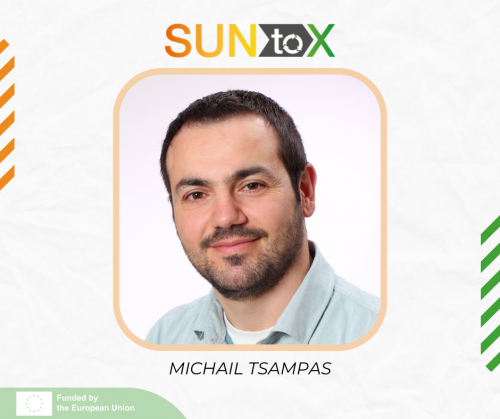
Who are you and what do you do?
I am senior scientist at Dutch Institute For Fundamental Energy Research (DIFFER) and group leader of Catalytic and Electrochemical Processes for Energy Applications (CEPEA). My group research is focused on electrochemical membrane reactors for conversion of renewable energy and molecular building blocks such as H2O, CO2 and N2 to energy or chemical rich molecules.
What is your role in the project?
At DIFFER together with TME we are working on the funtionalization of porous photoelectrodes with appropriate coatings that will allow water absorption from the humidity of ambient air.
Why is the Sun-to-X project important?
The Sun-to-X projects aims to demonstrate conversion of light and ambient humidity to hydrogen via a unique photoelectrochemical cell configuration. The selected approach is inspired by polymeric exchnage membrane electrolysis, however its advanatge is that it can be based on abundant materials. Moreover, a novel hydrogen storage approach is evaluated in the project i.e. a carbon-free, energy dense liquid silicon hydride fuel.
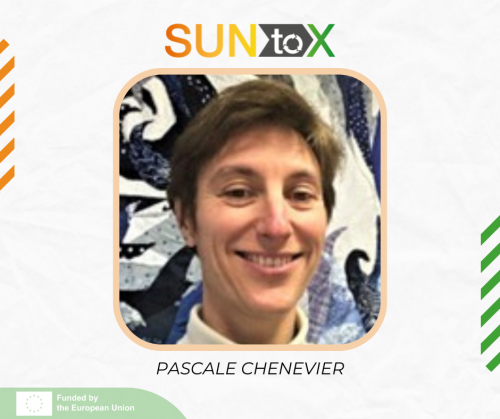
Who are you and what do you do?
I am a senior scientist in nanochemistry at CEA in Grenoble. My group synthesizes composite nanomaterials for fuel cells, lithium-ion batteries and solar hydrogen production cells. We grow and functionalize inorganic materials, such as carbon nanotubes, silicon nanowires or metal or semi-conductor nanocrystals that enter in energy devices. We try to understand their limits, keeping in mind that most of the electrochemical cycles at play rely on basic chemical processes at the nanoscale, but depend sharply on diffusion phenomena at a larger scale. Fitting the nano- and microstructures is thus essential!
What is your role in the project?
In Sun-to-X, I build photocathodes using silicon nanowires as a light-harvester, and molybdenum sulfide as a catalyst for hydrogen evolution. Although an excellent light-harvester (as seen in photovoltaic cells), silicon requires protection from oxidation in the presence of water, here required to produce hydrogen. We also need a good interaction between the molybdenum sulfide and the silicon to turn as many photons into hydrogen molecules as possible.
Why is the Sun-to-X project important?
Sun-to-X is an important project because it makes real a dreamed-of self-sustainable system, to store energy from sun light and ambient air into a valuable fuel, that can not only store energy but also serve as a chemical commodity. Such novel concepts have to be brought to life to help all of us think of the ecological transition in a more positive way! The Sun-to-X consortium is also delightful to work with, ambitious, enthusiastic and helping.
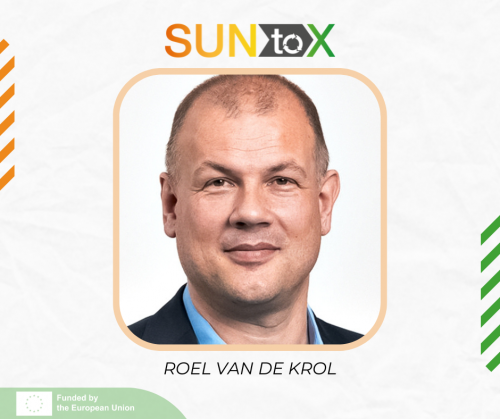
Who are you and what do you do?
I am director of the Institute for Solar Fuels at the Helmholtz-Zentrum Berlin and professor at TU Berlin. My group develops materials and devices for the photoelectrochemical conversion of sunlight into chemical fuels. We specialize in metal oxide absorbers and aim to understand the fundamental processes of charge generation, separation, and transfer, but also inreasingly focus on device engineering challenges.
What is your role in the project?
Together with Jayanthan Pattadai Jayaraman, a PhD student in my group, we work on porous photoanodes for the photoelectrochemical tandem device. This is the part of the device that splits water into oxygen and protons. One of the main challenges is to make this porous layer partially transparent, so that enough of the low-energy photons are transmitted to the photocathode at the bottom of the device.
Why is the Sun-to-X project important?
It is unique in the way that it utilizes both photoelectrochemical (PEC) and photothermal energy to generate and store hydrogen. For the PEC part, the concept of a porous tandem device that is fed with water vapor instead of liquid water is a very innovative approach that offers several important benefits in terms of product separation and possibly also device stability. Making this work is quite challenging, but if we succeed, it would bring us a step closer to the large scale production of green hydrogen from water and sunlight.
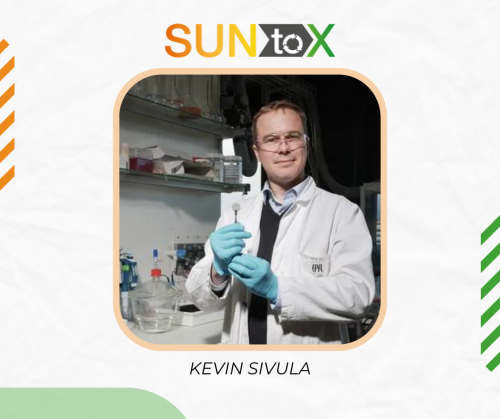
Who are you and what do you do?
I am an Associate Professor at EPFL, heading The Laboratory for Molecular Engineering of Optoelectronic Nanomaterials (LIMNO) . LIMNO incorporates competences of semiconductor synthesis, characterization, and device fabrication while individual projects concentrate on directing the composition, crystallinity, self-assembly, and morphology of our new materials using bottom-up techniques in order to control the semiconductor band gap, light absorption, charge transfer, carrier transport and device performance.
What is your role in the project?
We lead Work package 2, which is dedicated to developing the photocathode part of the overall solar conversion device. In addition we have participated in work package 1 with the development of transparent porous transport layers.
Why is the Sun-to-X project important?
Developing the Sun-to-X technology would move us closer to the large scale manufacturing of environmentally friendly solar fuels using sunlight and water. The Sun-to-X concept is distinct in its employment of both photoelectrochemical (PEC) and photothermal energy to produce and retain chemical fuels. The PEC component utilizes a novel porous tandem device, which is supplied with water vapor instead of liquid water, providing multiple advantages in terms of product separation and potentially device stability.
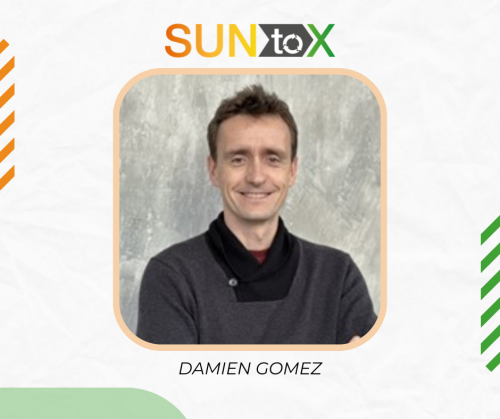
Who are you and what do you do?
Hysilabs has developped a novel inorganic hydrogen carrier, HydroSil, which is stable and safe at ambient pressure and temperature.
Hysilabs is developping the charging process (for attaching hydrogen onto HydroSil) and the release process (for releasing the hydrogen from HydroSil).
What is your role in the project?
In the frame of Sun-to-X, Hysilabs demonstrated the feasibility of the charging process and designed it for the scale of the Project (39 g H2/day converted to 320 g HydroSil, during 4 hours per day of production).
Why is the Sun-to-X project important?
Sun-to-X is an opportunity to integrate the charging process in a broader process chain, with innovative technologies and solutions for hydrogen generation and efficient use of solar thermal power.

Who are you and what do you do?
I’m a senior engineer in the Materials Engineering department at Toyota Motor Europe based in Belgium. Our department works on research themes towards the realisation of green transport, including green hydrogen production. Within the green hydrogen theme we work on electrolysis, photoelectrochemical and photocatalytic systems with an aim to achieve low cost, green hydrogen for a variety of applications.
What is your role in the project?
I’m coordinator of the Sun-To-X project and also involved in the development of the photocathode which absorbs sunlight, generates energy which splits water into hydrogen. I also work on the development of water absorbing materials, which can take water from the air as a feedstock for hydrogen production.
Why is the Sun-to-X project important?
The Sun-To-X project aims to demonstrate a value chain to produce hydrogen using a unique and scalable photoelectrochemical device structure. This hydrogen will then be stored in a carbon-free, energy dense liquid silicon hydride fuel using solar energy. This fuel has applicability in the transport and industrial sectors, along with applications in waste plastic recycling. This amazing and ambitious project will contribute to the development of a decarbonised European society.
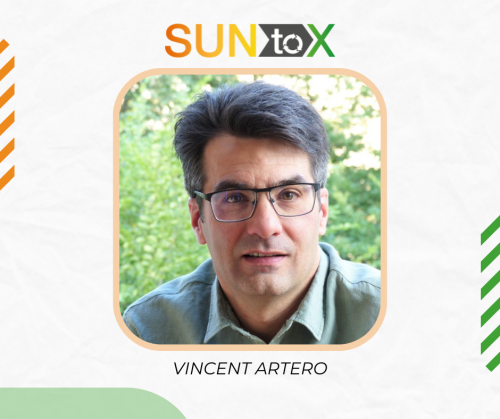
Who are you and what do you do?
I am Research director at CEA and director of the laboratory of Chemistry and Biology of Metals co-operated by the University Grenoble Alpes, CNRS and CEA. In this laboratory, my team, called SolHyCat (solar fuels, Hydrogen and Catalysis) develops bio-inspired catalysts for hydrogen production and oxidation, CO2 valorisation and N2 fixation and integrate these catalysts into artificial photosynthetic systems
What is your role in the project?
Together with Adina Morozan, a CNRS research engineer in my team, and Toyota Motor Europe, we develop bioinspired catalysts for H2 evolution based on metal sulfides. We collaborate with Pascale Chenevier to integrate these catalysts into photocathodes.
Why is the Sun-to-X project important?
Sun-to-X is special in the sence that it promotes a new topology for photoelectrochemical cells allow for a compact (zero-gap) design based on a transparent membrane. This allows to capture water from the atmosphere and also to easily recover H2 at the back side of a porous photocathode.
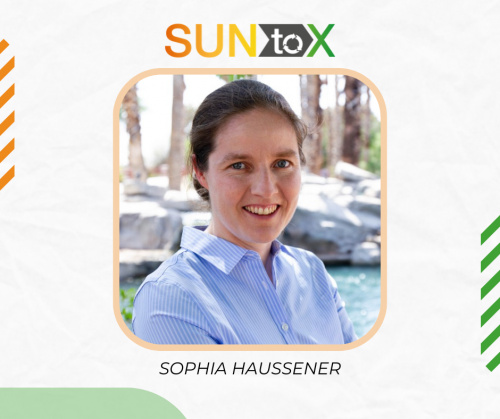
Who are you and what do you do?
I am an Associate Professor at EPFL, heading the Laboratory of Renewable Energy Science and Engineering. We work on modeling, demonstration and scaling of solar energy conversion devices, including (photo)electrochemcial devices and solar thermochemical reactors.
What is your role in the project?
We develop multi-physical models of the photoelectrochemical device, multi-scale system models of the photoelectrochemical and thermochemical devices that make up the complete system, as well as techno-economic models of the deivces and system.
Why is the Sun-to-X project important?
It explores an alternative device approach for photoelectrochemical routes working with water vapor as reactant and with the promise of simplicity and lower cost. Additionally, the photoelectrochemical process is coupled to a thermochemical process to store the hydrogen in an alternative form (hydrosil), therefore it addresses the challenge with the volumetric energy density of hydrogen. Finally, the combination of photoelectrochemical and thermochemical process provides opportunities for integration and better usage of the solar spectrum, with the potential for a higher efficiency.
COMING SOON!
COMING SOON!
COMING SOON!
